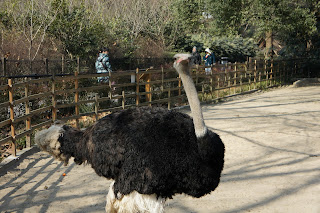Me, my girlfriend and my colleagues from Korea decided to visit Suzhou. We traveled to Suzhou with a Chinese friend who stays there and the ride takes about 40 minutes-50 minutes by car with as many as 3 toll booths in between. Apparently, every time when you cross a China district border, you have to pay toll which is somewhat similar to Malaysia, except now Malaysia charges by distance when you travel on the North South Highway. The objective of this travel was mostly to cook and try out my Chinese colleague's cooking so the traveling bit is a bit lacking in this review.
Starting off with a view from my friend's home, this area is actually a Singaporean owned land in Suzhou, China as an investment by the Singaporean government. The streets and decoration are supposed to represent Singapore's own country which in my opinion, has a close resemblance but not entirely the same. However, the place does look nice and clean and it's relatively cheap (RMB150k+ when bought).
After lunch, we made our way to PingJiangLu. This road is famous for its traditional water village look with old chinese style roof tops, doors, buildings and bridges BUT with very modernized coffee shops, eateries and China goods. We were there after dusk so the ambiance was nice with the street well lit. Below is a little something I googled from another site (sorry I can't remember which site) but it is a small history of the area we visited.
"Extended 1,600 meters, the Pingjianglu starts from Huayang Bridge in the north to Yuanqiao Bridge of Ganjianglu. The Pingjianghe River runs through the district, forming the crisscross water network of Suzhou. You could find 13 bridge striding across the river. Bridges are densely distributed here.
The history of the Pingjianglu: the orginial meaning is "Shiquanli", literally means ten springs road coz in ancient time, 10 wells could be found along this road. The name of Pingjianglu first shown on the
After a bit of walking, we managed to find a small cozy coffee/tea shop where we enjoyed a pot of tea at RMB40. There is also an excellent live singer there which is worth the visit.
And for those who have not taken the bullet train, the below is China's version of the bullet train, travelling at almost 450km/h maximum. The tickets are RMB36 from Suzhou to HongQiao for an economy seat. The train is clean and there's also a first class seat which we had the privilege of trying out thanks to some guy who stole our seats!




























